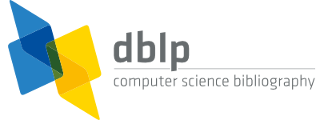


default search action
2nd CSCL 1997: Toronto, ON, Canada
- Rogers Hall, Naomi Miyake, Noel Enyedy:

Proceedings of the 2nd International Conference on Computer Support for Collaborative Learning, CSCL 1997, Toronto, Ontario, Canada, December 10-14, 1997. International Society of the Learning Sciences 1997 - Michelle Baker, Judith Levy Cohen, Babette Moeller:

KidCode: using email to structure interactions for elementary mathematics instruction. 1-9 - Philip Bell:

Using argument representations to make thinking visible for individuals and groups. 10-19 - Amy S. Bruckman, Austina de Bonte:

MOOSE goes to school: a comparison of three classrooms using a CSCL environment. 20-27 - Noel Enyedy, Phil Vahey, Bernard Gifford:

Active and supportive computer-mediated resources for student-to-student conversations. 28-38 - Barry Fishman, Louis M. Gomez:

How activities foster CMC tool use in classrooms. 39-46 - Nick V. Flor, Paul P. Maglio:

Emergent global cueing of local activity: covering in music. 47-54 - John Frederiksen, Barbara Y. White:

Cognitive facilitation: a method for promoting reflective collaboration. 55-64 - David Graves, Maria M. Klawe:

Supporting learners in a remote CSCL environment: the importance of task and communication. 65-75 - Jim E. Greer, Gordon I. McCalla, Vive Kumar, Jason A. Collins, Paul Meagher:

Facilitating collaborative learning in distributed organizations. 76-85 - Mark Guzdial:

Information ecology of collaborations in educational settings: influence of tool. 86-94 - Mark Guzdial, Cindy E. Hmelo, Roland Hübscher, Kristine S. Nagel, Wendy Newstetter, Sadhana Puntambekar, Amnon Shabo, Jennifer Turns, Janet L. Kolodner:

Integrating and guiding collaboration: lessons learned in computer-supported collaborative learning research at Georgia Tech. 95-105 - Katsumi Hosoya, Akihisa Kawanobe, Susumu Kakuta, Munish Sharma:

Interactive cooperative learning system based on virtual shared space: HyCLASS. 106-113 - Sherry Hsi, Robert Tinker:

A scalable model of collaborative learning: the virtual high school consortium. 114-122 - Kim Issroff, Eileen Scanlon, Ann C. Jones:

Two empirical studies of computer-supported collaborative learning in science: methodological and affective implications. 123-129 - Heisawn Jeong, Michelene T. H. Chi:

Construction of shared knowledge during collaborative learning. 130-134 - Ana Jurema, Maureen O'Rourke:

An international approach to developing information technology (IT) literacy in schools based on critical consciousness. 135-141 - Victor Kaptelinin, Michael Cole:

Individual and collective activities in educational computer game playing. 142-147 - Hiroshi Kato, Keiichi Yamazaki, Hideyuki Suzuki, Hideaki Kuzuoka, Hiroyuki Miki, Akiko Yamazaki:

Designing a video-mediated collaboration system based on a body metaphor. 148-156 - Janet L. Kolodner, Baruch B. Schwarz, Reuma DeGroot Barkai, Edith Levy-Neumand, Anna Tcherni, Anat Turbovsky:

Roles of a case library as a collaborative tool for fostering argumentation. 157-163 - Jeff Kupperman, Raven Wallace, Nathan Bos:

Ninth graders' use of a shared database in an internet research project: issues of collaboration and knowledge-building. 164-170 - Lasse Lipponen, Kai Hakkarainen:

Developing culture of inquiry in computer-supported collaborative learning. 171-175 - Ben Loh, Josh Radinsky, Brian J. Reiser, Louis M. Gomez, Daniel C. Edelson, Eric Russell:

The progress Portfolio: promoting reflective inquiry in complex investigation environments. 176-185 - Simon J. Masterton:

The virtual participant: lessons to be learned from a case-based tutor's assistant. 186-196 - Jun Oshima:

Students' construction of scientific explanations in a collaborative hyper-media learning environment. 197-207 - Anthony J. Petrosino, Jay Pfaffman:

The mission to mars Webliographer: a principled approach to the design of a CSCL tool. 208-216 - Sadhana Puntambekar, Kristine S. Nagel, Roland Hübscher, Mark Guzdial, Janet L. Kolodner:

Intra-group and intergroup: an exploration of learning with complementary collaboration tools. 217 - Robert Rieger, Geraldine Gay:

Using mobile computing to enhance field study. 218-226 - Eileen Scanlon, Tim O'Shea, Randall B. Smith, Yibing Li:

Supporting the distributed synchronous learning of probability: learning from an experiment. 227-233 - Mark S. Schlager, Patricia K. Schank:

TAPPED IN: a new on-line teacher community concept for the next generation of internet technology. 234-243 - Amnon Shabo, Kristine S. Nagel, Mark Guzdial, Janet L. Kolodner:

JavaCAP: a collaborative case authoring program on the WWW. 244-252 - David Williamson Shaffer:

Design, collaboration, and computation: the design studio as a model for computer supported collaboration in mathematics. 253-258 - Reed Stevens:

Divisions of labor in computer-assisted design: a comparison of cases from work and school. 259-268 - Barb Stuart:

Computer supported and collaborative conflict resolution: Shalom/Salaam. 269-274 - Daniel D. Suthers, Eva Erdosne Toth, Arlene Weiner:

An integrated approach to implementing collaborative inquiry in the classroom. 275-282 - Hideyuki Suzuki, Hiroshi Kato:

Identity formation/transformation as the process of collaborative learning through AlgoArena. 283-291 - Iris Tabak, Brian J. Reiser:

Complementary roles of software-based scaffolding and teacher-student interactions in inquiry learning. 292-301 - Douglas R. Ward, Esther L. Tiessen:

Supporting collaborative project-based learning on the WWW. 302-310 - Denise Whitelock, Eileen Scanlon:

Measuring the meaning conveyed by a glance or a gesture in a computer supported collaborative learning environment. 311-316

manage site settings
To protect your privacy, all features that rely on external API calls from your browser are turned off by default. You need to opt-in for them to become active. All settings here will be stored as cookies with your web browser. For more information see our F.A.Q.


 Google
Google Google Scholar
Google Scholar Semantic Scholar
Semantic Scholar Internet Archive Scholar
Internet Archive Scholar CiteSeerX
CiteSeerX ORCID
ORCID














